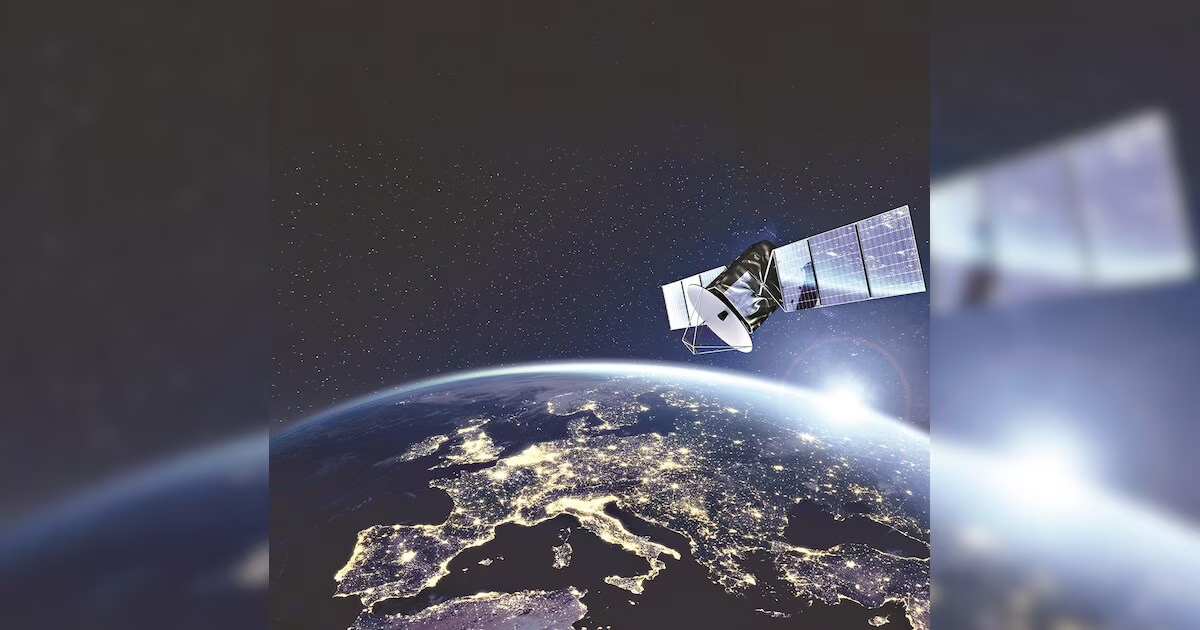- Courses
- GS Full Course 1 Year
- GS Full Course 2 Year
- GS Full Course 3 Year
- GS Full Course Till Selection
- Answer Alpha: Mains 2025 Mentorship
- MEP (Mains Enrichment Programme) Data, Facts
- Essay Target – 150+ Marks
- Online Program
- GS Recorded Course
- Polity
- Geography
- Economy
- Ancient, Medieval and Art & Culture AMAC
- Modern India, Post Independence & World History
- Environment
- Governance
- Science & Technology
- International Relations and Internal Security
- Disaster Management
- Ethics
- NCERT Current Affairs
- Indian Society and Social Issue
- NCERT- Science and Technology
- NCERT - Geography
- NCERT - Ancient History
- NCERT- World History
- NCERT Modern History
- CSAT
- 5 LAYERED ARJUNA Mentorship
- Public Administration Optional
- ABOUT US
- OUR TOPPERS
- TEST SERIES
- FREE STUDY MATERIAL
- VIDEOS
- CONTACT US
China Launches 12 Satellites to Build World's 1st Space-Based Supercomputer
China Launches 12 Satellites to Build World's 1st Space-Based Supercomputer
22-05-2025

- In May 2025, China launched 12 satellites as part of its 3-Body Computing Constellation project.
- Constellation refers to a group of satellites that work together in orbit.
- It is usually coordinated to perform specific tasks or functions.
- These satellites are often designed to interconnect with each other and provide continuous, global coverage.
- This initiative aims to create a space-based supercomputing network
- It aims to provide real-time data processing with computing power in orbit.
What is Space-Based Supercomputing:
- Space-based supercomputing involves using satellites in orbit to process large volumes of data in real-time.
- It eliminates the need to send data back to Earth. This offers lower latency, higher computational efficiency, and benefits from solar energy and natural cooling in space.
Launch Details:
- Launch Vehicle: Long March 2D rocket
- Launch Site: Jiuquan Satellite Launch Centre
- Planned Total Satellites: 2,800 satellites
- Objective: To Establish a space-based network that can achieve 1,000 peta operations per second (POPS) computing capacity upon full deployment.
Satellite Specifications:
- Computing Power per Satellite: Each satellite can handle 744 trillion operations per second.
- Combined Computing Power (for 12 satellites): This cluster delivers 5 peta operations per second (POPS).
- Storage Capacity: Each satellite carries 30 terabytes of storage.
- Data Transfer Speed: Laser communication links between satellites provide a data transfer rate of 100 gigabits per second.
- AI Processing Power: Equipped with AI models containing 8 billion parameters, the satellites can process raw data directly in orbit.
- Autonomous Functionality: The satellites operate autonomously, enabling them to collect and process data without needing ground stations.
Technological Innovations and Advantages:
- Unlike traditional satellites that relay data to Earth for processing, these satellites process data in space, reducing latency and transmission delays.
- This is crucial for applications that require near-instant decision-making.
- The laser communication technology ensures high-speed data transfer of 100 Gbps between satellites
- Laser communication technology, also known as free-space optical communication (FSO).
- It is a method of transmitting data using laser beams instead of traditional radio frequency (RF) signals.
- It involves using light (usually in the form of lasers) to carry information over long distances, enabling high-speed, high-capacity communication systems.
- Example : (between satellites in orbit) for global networks like SpaceX's Starlink
- It enhances the efficiency of the network for applications like AI and deep-space communications.
- These satellites are powered by solar energy.
- The excess heat generated is released into space, preventing the need for traditional cooling methods and offering a much more energy-efficient system than Earth-based data centers.
- The satellites have the capability to autonomously process data, allowing for greater flexibility and efficiency in AI applications without needing constant control from Earth.
Applications of Space-Based Supercomputing:
- The satellites provide real-time data collection and processing, which is crucial for environmental monitoring, tracking weather patterns, and addressing climate change.
- Space-based supercomputing enables the direct processing of data from deep-space missions, such as Mars exploration and astronomical observations, reducing the need for extensive data transmission to Earth.
- The satellites’ AI systems allow for applications like image recognition, machine learning, and data pattern analysis, offering a significant advantage for both scientific research and AI advancements.
Environmental and Strategic Implications:
- Space-based supercomputing could address the growing environmental concerns related to Earth-based data centers, which contribute significantly to energy consumption and carbon emissions.
- By using solar power and releasing excess heat into space, these satellites offer a more sustainable computing alternative.
- Global data centers are expected to consume over 1,000 terawatt-hours (TWh) of electricity annually by 2026, equivalent to the entire energy consumption of Japan.
- Space-based supercomputing offers a sustainable alternative by reducing power usage and carbon emissions.
- The development of this technology enhances China’s technological edge, particularly in space technology and artificial intelligence.
- This can provide significant geopolitical advantages in terms of global space exploration, intelligence gathering, and military surveillance.
- China’s leadership in this space-based supercomputing project could spur other countries, including the United States, Russia, and the European Union, to develop similar systems, increasing competition in space-based technology and AI development.
Challenges and Limitations:
- Power Management: Managing the solar energy in space and ensuring continuous operation of 2,800 satellites presents challenges in terms of energy storage and efficiency.
- Maintenance: Ongoing maintenance and upgrades of the large constellation of satellites will be complex, requiring significant technological and financial investments.
- Cybersecurity: Given the importance of the data handled by these satellites, cyberattacks could threaten the integrity of the system.
- Military Use: The satellites can also be adapted for military reconnaissance and intelligence gathering, which raises concerns over the militarization of space and the weaponization of space-based technologies
- The rise of space-based technologies necessitates stronger international cooperation and regulation, particularly regarding space debris, satellite collisions, and the militarization of space.
Future Prospects:
- As China leads in space-based supercomputing, other nations, particularly the USA, Russia, and the European Union, may feel pressured to develop their own space-based AI networks.
- This could lead to a new space race for technological dominance.
|
Also Read |
|
UPSC Foundation Course |
|
| UPSC Monthly Magazine | CSAT Foundation Course |




